



ORGANS OF PARIS © 2025 Vincent Hildebrandt HOME ALL ORGANS
Cathédrale Américaine
23, avenue Georges V, 75008 Paris


The American Cathedral of Paris is a church
dedicated to Anglican worship and serving as a
cathedral for the Convocation of Episcopal
Churches in Europe of the Episcopal Church U.S.
Opened in 1886, it was designed by the English
architect George Edmund Street, who gave it a
neo-Gothic style. It was the latter's son who added
an arrow between 1904-1906 in order to complete
the building. The church has numerous stained
glass windows (42 in total) created by master
glassmaker James Bell on the theme of the Te
Deum, offering under its vaults a magnificent
atmosphere of multicolored darkness.
(Translation of a French text by Thierry Correard)



Photos beneath: Victor Weller

1887 - Aristide Cavaillé-Coll (1)
1922 - Cavaillé-Coll-Pleyel (3A)
1930 - Convers (7)
1970 - Beuchet-Debierre (3a)
1993 - Dargassies (3a)
IV/72 - Transmissions électriques
composition

E5
The great organ of the American Cathedral was built by Aristide
Cavaillé-Coll in 1887 and inaugurated on October 5 of the same
year by Alexandre Guilmant. It had 45 stops spread over 3
keyboards (GO, Positive and Swell) and a Pedal. The instrument is
placed on a platform at the crossroads of the nave and the
transept. On the advice of Marcel Dupré, the instrument was
extended (7 new stops) and electrified by Mutin in 1922. Later,
interventions by Convers in 1930, then by Beuchet-Debierre in
1970, took the instrument to 62 stops. That same year, Erwin
Muller built a small organ of neo-classical aesthetics that was
installed on a tribune located at the bottom of the nave and in
the axis of it, near the entrance to the cathedral.
Between 1992 and 1993, Bernard Dargassies restored and
expanded the organ to 72 stops by building a new buffet which
replaced the organ of Muller. This new buffet constituted a 4th
keyboard called "Antiphonal" of 10 stops, which can be played
from the main console of the great organ. The term Antiphonal
refers to a choir organ in the USA. Here, the Antiphonal was not
placed in the choir but on a tribune. In addition, it has an 8'
chamade rank. This small buffet of 10 stops constitutes also an
independent organ thanks to a specific console of one keyboard
located under this tribune and allowing to play it separately. It is
therefore possible, at the console of the large organ of 4
keyboards (main console), to play the 3 keyboards and pedals
corresponding to the main buffet as well as the Antiphonal
keyboard placed in the secondary buffet.
(Translation of a French text by Thierry Correard)
This organ will be completely reconstructed by Klais et Thomas.
Site of the organ
Organiste titulaire
Andrew Dewar
Concerts
Regularly
Services with organ
Sunday 9, 11 a.m., 6 p.m.
Video
Michał Szostak
Andrew Dewar
Organs of Paris


ORGANS OF PARIS © 2025 Vincent Hildebrandt ALL ORGANS

1887 - Aristide Cavaillé-Coll (1)
1922 - Cavaillé-Coll-Pleyel (3A)
1930 - Convers (7)
1970 - Beuchet-Debierre (3a)
1993 - Dargassies (3a)
IV/72 - Transmissions électriques
composition
E5
The great organ of the American Cathedral was built by
Aristide Cavaillé-Coll in 1887 and inaugurated on October 5 of
the same year by Alexandre Guilmant. It had 45 stops spread
over 3 keyboards (GO, Positive and Swell) and a Pedal. The
instrument is placed on a platform at the crossroads of the
nave and the transept. On the advice of Marcel Dupré, the
instrument was extended (7 new stops) and electrified by
Mutin in 1922. Later, interventions by Convers in 1930, then
by Beuchet-Debierre in 1970, took the instrument to 62
stops. That same year, Erwin Muller built a small organ of
neo-classical aesthetics that was installed on a tribune
located at the bottom of the nave and in the axis of it, near
the entrance to the cathedral.
Between 1992 and 1993, Bernard Dargassies restored and
expanded the organ to 72 stops by building a new buffet
which replaced the organ of Muller. This new buffet
constituted a 4th keyboard called "Antiphonal" of 10 stops,
which can be played from the main console of the great
organ. The term Antiphonal refers to a choir organ in the
USA. Here, the Antiphonal was not placed in the choir but on
a tribune. In addition, it has an 8' chamade rank. This small
buffet of 10 stops constitutes also an independent organ
thanks to a specific console of one keyboard located under
this tribune and allowing to play it separately. It is therefore
possible, at the console of the large organ of 4 keyboards
(main console), to play the 3 keyboards and pedals
corresponding to the main buffet as well as the Antiphonal
keyboard placed in the secondary buffet.
(Translation of a French text by Thierry Correard)
This organ will be completely reconstructed by Klais et
Thomas.
Site of the organ
Organiste titulaire
Andrew Dewar
Concerts
Regularly
Services with organ
Sunday 9, 11 a.m., 6 p.m.
Video
Michał Szostak
Andrew Dewar





















